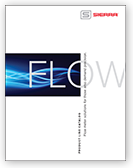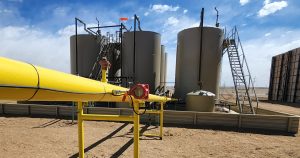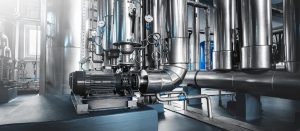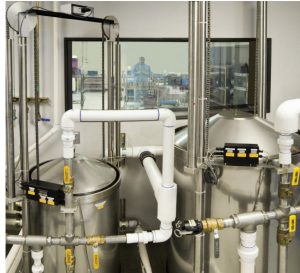Official Blog of Sierra--Let's Talk Flow!
Most Common Flow Meter Problems & How to Solve Them
Engineers, process managers, and technicians rely on flow meters to deliver the precise, real-time data they need to handle, transfer, and store fluids safely and efficiently in applications from oil and gas production to precision manufacturing — and even healthcare.
Modern flow sensors from leading industry suppliers deliver high levels of accuracy, reliability, and durability over their lifetimes. However, when they fail or deliver inaccurate or inconsistent readings — either out of the box or over time — it can have a serious impact on productivity, product quality, and even safety.
Here we take a look at some common flow meter problems associated with performance and their likely causes. We also consider how better choices in selecting, installing, and maintaining flow meters — as well as partnering with a reliable equipment supplier over time — can help you prevent problems and manage them better when they occur.
Trouble on the Line: 6 Common Flow Meter Problems
Flow meter readings need to be accurate, instant, and consistently repeatable to be useful in fluid handling and transfer. Here are the most common causes of flow meter failure or inaccuracy.
1. Obstruction or Blockages
Undetected obstruction of blockages in fluid flow, immediately upstream or even between meter sensors, can cause inaccurate or inconsistent readings. This problem can potentially affect all flow meters.
2. Unexpected Changes in Fluid Properties
Sudden changes in the property of the fluid being metered, from temperature to pressure to viscosity, can mean measurements fall outside an instrument’s calibrated range or prevent the meter from working entirely. This is a common challenge for saturated steam applications and some oil and gas in-field production processes.
3. Sensor Fouling
Depending on the process, industrial flow meters can be susceptible to several types of fouling over time. This can include:
- Scaling, including calcium, magnesium, or sodium deposits
- Sludge, including grime, oil, drill cuttings, grindings, or other impurities
- Rust, or corrosion that cakes and eventually eats away metal parts
- Slime, or microorganisms in untreated water
Fouling can thicken and slow down liquid or gas flows and over time reduce and eventually cover sensor surfaces or fluid intakes. The more intrusive an instrument is into the fluid flow, and the more moving parts it has, the more at risk it is to fouling, while meters with reactive metal parts are vulnerable to chemical processes like corrosion and scaling.
4. Wear and Tear
All sensors are subject to wear and tear, from friction on the moving parts of turbine or vane instruments to damage caused by the expansion and contraction of heated parts such as resistance-temperature detectors (RTDs). Wear is highest in high-temperature/high-pressure applications or processes involving corrosive fluids or big swings in temperature.
5. Incorrect Calibration
While a meter may be mechanically sound, incorrect calibration can lead to inaccurate or inconsistent readings. Flow meters and controllers need to be calibrated to account for the temperature, pressure, density, and viscosity of the fluids they are metering. A meter’s calibration can be off if:
- It was poorly calibrated in the factory
- It is being used with the wrong gas or liquid mix
- Calibration settings have drifted over time
In addition, exposure to unexpected fluid types of mixes will also make existing flow range calibration settings less accurate.
6. Improper Installation
There are also several ways in which incorrect or faulty meter installation can affect the accuracy and consistency of readings:
- Wrong fluid type: a meter is exposed to fluids it is not designed to measure
- Backward installation: meters are inserted incorrectly into the fluid flow so intake direction or sensor order is reversed
- Local flow issues: meters are affected by undiagnosed local turbulence, bubbles, or pressure drops caused by pipe geometry or intrusive structures.
How to Solve Common Flow Meter Problems
Most potential problems that may affect meter performance can be prevented or minimized by choosing appropriate equipment from a reputable supplier, ensuring it is properly calibrated and installed, and checking and maintaining it on schedule. Let’s take a closer look at these considerations.
1. Choose the Right Meter for the Job
You can prevent many performance and maintenance headaches by working closely with your supplier to identify the best meter for your application based on your measurement needs, fluid characteristics, and operating conditions. Common considerations include:
Volumetric vs. Mass Flows
While measuring the volume of fluid passing a point is important in almost every industrial process, applications that rely specifically on gas transfers usually need to measure the actual mass of gas being moved. Mass flow can be measured directly by Coriolis and thermal mass flow meters. Thermal mass flowmeters count the gas molecules, they are immune to changes in inlet temperature and pressure and measure mass flow directly without compensation.
Accuracy
Coriolis and thermal mass meters also offer significantly higher accuracy for most applications, while their simple design enhances overall reliability. Their design and direct mass reading mean confidence that your results are more repeatable, while excellent rangeability means more accurate calibration, even in variable or low-flow environments. However, Sierra’s QuadraTherm® thermal mass flow meters deliver accuracy as good as, if not better than, Coriolis meters with a single device at a fraction of the price.
Raw and Untreated Fluids
Where unfiltered or untreated fluids are being handled it is best to use robust, less intrusive metering equipment with few moving parts to prevent blockages and fouling. Differential pressure equipment such as orifice plates or Venturi meters are commonly used for a wide range of applications but less intrusive thermal mass sensors are gaining popularity.
High Temperatures
High-temperature processes can wreak havoc with meters that rely directly on pressure measurements. High-performing thermal mass meters are increasingly the go-to choice for demanding flaring, boiler, and furnace applications, while vortex flow meters are often used with superheated and saturated steam.
Corrosive Environments
Meter designs that minimize the exposure of metallic surfaces to fluids are preferred for corrosive environments.
Variable Fluid Mixes
Where meters are required to respond to variable mixes of gases, the direct mass measurement, high rangeability, and more accurate calibration of Coriolis or thermal mass instruments work best. Some units, such as Sierra Instruments’ QuadraTherm® and SmartTrak® systems, can be reprogrammed to read different mixes.
Wear and Tear
Any meter exposed directly to fluid flows will experience some wear and tear, which makes remote sensing capabilities of mobile ultrasonic meters invaluable for on-the-go line measurements. For in-pipe measurements, thermal mass meters offer less intrusion and no moving parts, keeping maintenance requirements to a minimum.
This table summarizes the strengths and weaknesses of flow available flow measurement technologies for use in different fluid transfer environments
| ULTRASONIC FLOW METERS | |
| STRENGTH | WEAKNESSES |
|
|
| DIFFERENTIAL PRESSURE DEVICES | |
|---|---|
| STRENGTH | WEAKNESSES |
|
|
| VORTEX FLOW DEVICES | |
|---|---|
| STRENGTH | WEAKNESSES |
|
|
| CORIOLIS MASS FLOW METERS | |
|---|---|
| STRENGTH | WEAKNESSES |
|
|
| THERMAL MASS FLOW METERS | |
|---|---|
| STRENGTH | WEAKNESSES |
|
|
* Adapted from Understanding Flow Measurement for Emissions Monitoring | Sierra Instruments.
2. Maintain Equipment on Time
Regular maintenance will increase the useful life of your flow metering equipment while improving overall performance and accuracy. Cleaning equipment and checking seatings, sealing, and connections will prevent many reliability headaches. It also helps to choose simple equipment that is easy to clean and to pay more up-front for quality components that will wear longer.
Choose a long-term equipment partner with a reputable support and customer service program. Sierra Instruments leak-checks every meter and tests each unit to 150% of its maximum working pressure. Electrical components are also extensively burnt in. All of our flow meters feature a 1-year warranty, and we support every flow product over its full lifetime.
3. Keep Your Meters “In Cal”
Meter calibration is essential to assuring the accuracy, reliability, and repeatability of your fluid flow data. In fact, at Sierra Instruments, we have a saying: “An instrument’s accuracy is only as good as its calibration.”
In many cases, improperly calibrated metering can lead to a gradual decline in performance as instrumentation drifts further away from factory settings. In some industries, flow meters are required by local, state, and federal to be regularly checked and recalibrated. Many operators choose to have their instrumentation recalibrated annually.
Some equipment suppliers check their equipment against common secondary transfer standards. Sierra Equipment chooses to calibrate our equipment to the primary standards set by the U.S. National Institute of Standards and Testing (NIST) for world-class levels of accuracy and traceability.
We also offer our customers a detailed 10-point calibration standard for our full mass flow meter and controller range. That means equipment is calibrated to an accuracy of better than 1% of its full scale in line with NIST-traceable standard requirements.
Sierra Instruments maintains an ISO 9001-certified, state-of-the-art calibration facility at our Monterey headquarters that features high-temperature gas wind tunnels, closed-loop gas calibration systems, and other equipment that allows calibrations to within 0.15% of a reading.
We offer full meter calibration services at our global centers of excellence in Mexico, Brazil, Singapore, South Korea, and other locations worldwide. We can also schedule same-day visits by our technicians for on-site calibration of equipment.
4. Get Expert Installation Help
Spending good money on quality flow meter equipment makes little sense if you’re not going to take the trouble to ensure every unit is installed correctly. Choose an equipment supplier who will not only ensure that you get meters that match your application perfectly but will also stand by you to make sure they are installed correctly for optimum performance.
Sierra Instruments offers the world’s widest selection of quality gas mass flow metering equipment and we stand by our products with expert guidance, installation support, and training. We offer resources and support services to help you avoid common mistakes like:
- Insufficient straight-run pipe upstream and downstream of flow meters
- Accidental backward installation of vortex and other meters
- Incorrect meter or calibration for the fluid type in a pipe
We also build our equipment with easy, right-first-time installation in mind. Many of our flow meters have clearly marked flow direction indicators and our QuadraTherm, and BioTrak flow meters have special retractors that allow them to be installed directly with no process shutdown.
Working with a reliable supplier like Sierra Instruments will help ensure your equipment is properly installed to deliver accuracy, efficiency, and performance from day one, and a better return on your flow measurement investment over time. At Sierra, we support our customers from day one with:
- Custom flow engineering
- Expert advice
- Short lead times
- Lifetime product support
Your Mass Flow Meter Solution Provider
At Sierra Instruments, we build quality fluid flow metering solutions that are designed to solve common product, installation, and calibration problems before they occur. As pioneers in direct mass flow measurement technology, we have more than 50 years of experience in matching products to flow applications to ensure performance, accuracy, reliability, and durability.
We’re proud to offer our customers:
- Innovative, precision-engineered flow meter technologies
- Durable construction and corrosion-resistant platinum and stainless steel components
- Industry-leading meter calibration and repair services
- An easy online management system to track and schedule meter calibrations
- Unmatched support through our technical assistance hotline, live chat service, online resources, and technician site visits
Whether you’re handling process gases, industrial liquids, or superheated water and steam, we have the products, know-how, and experience to help you solve your toughest flow challenges.
Click below to learn more about our wide range of high-performance flow meters.
Maryadine Washington, Mar-Com Manager
Sierra Instruments

 Go to Autotest Division >
Go to Autotest Division > DOWNLOAD
DOWNLOAD

